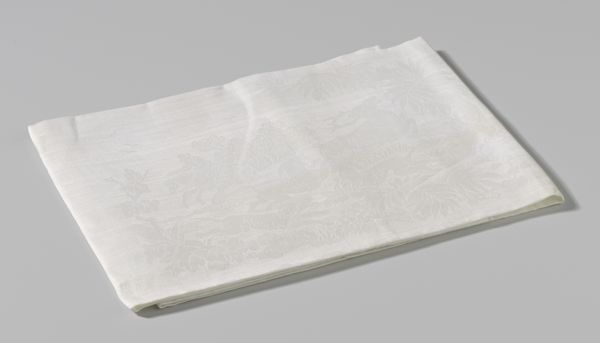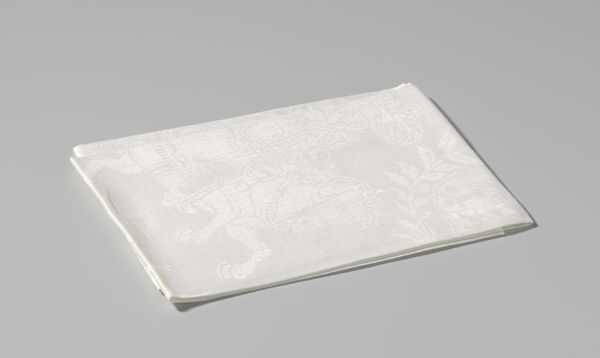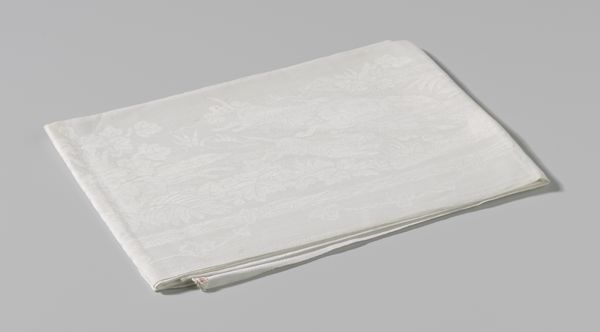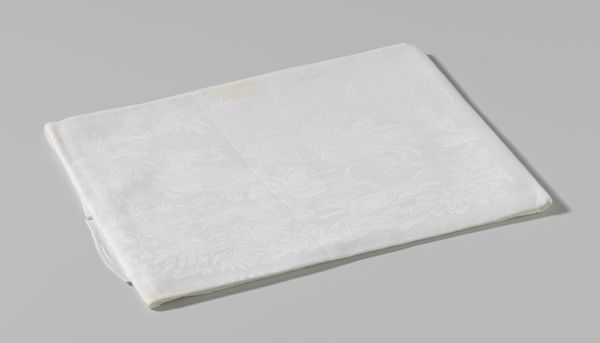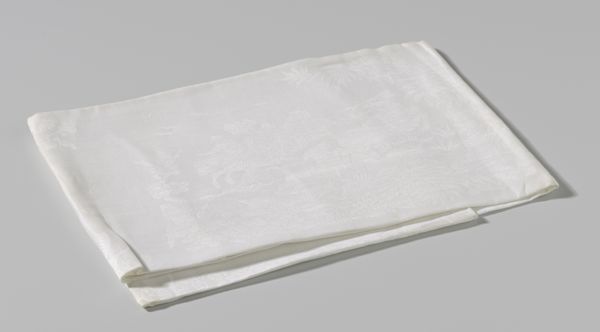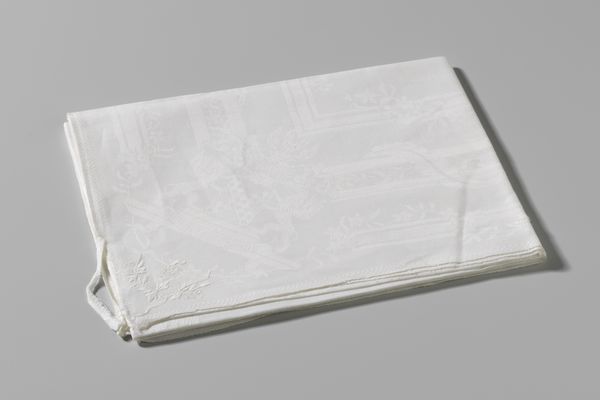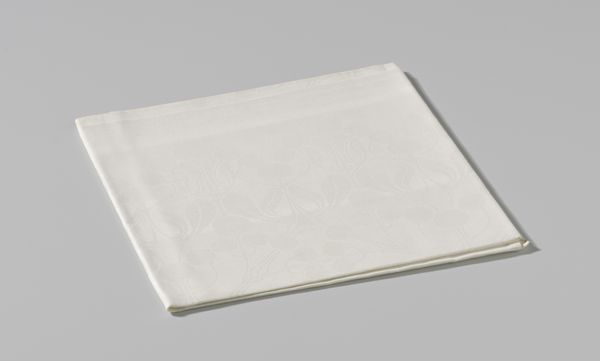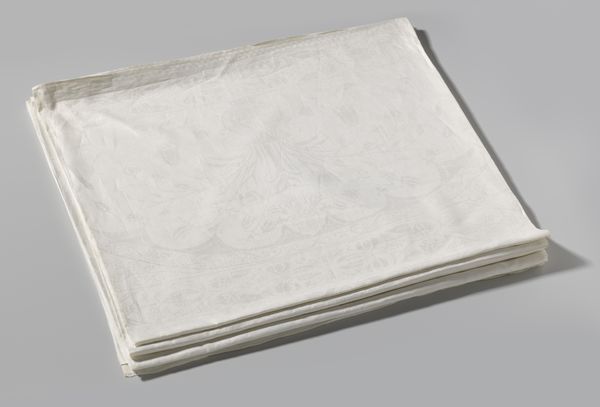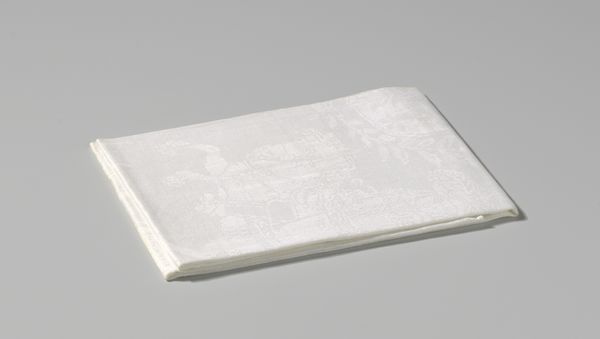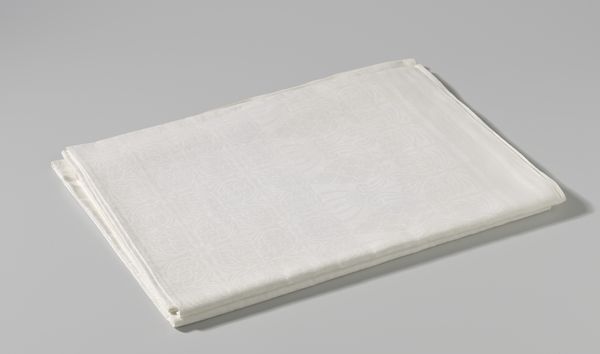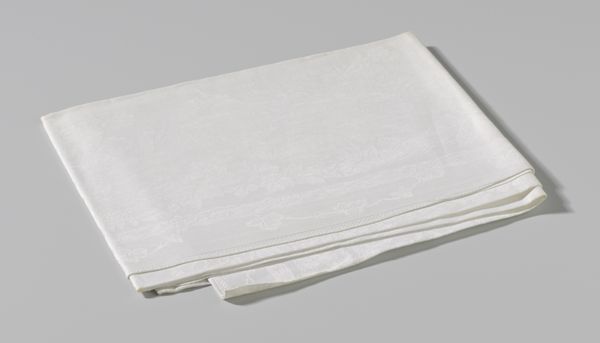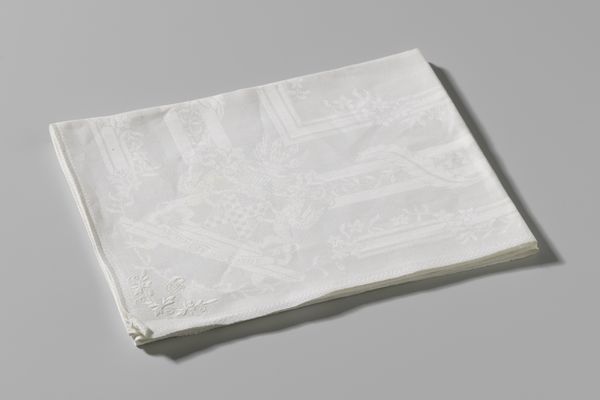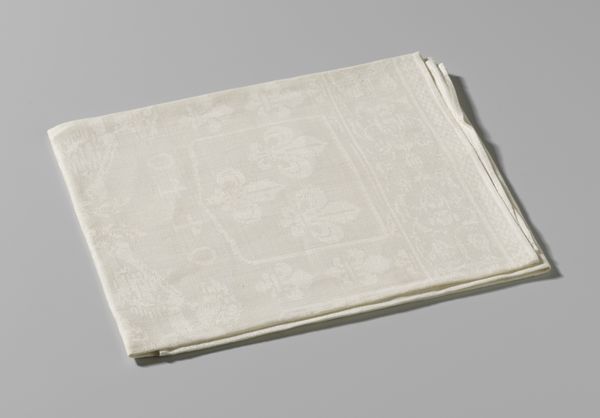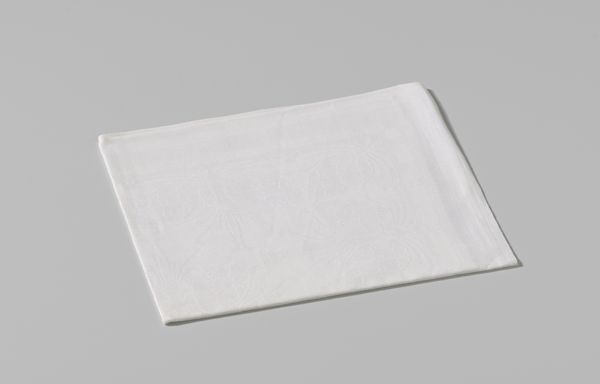
Servet met de verovering van Neuhäusel, Gran, Buda en Pest door Leopold I, keizer van Duitsland after 1686
0:00
0:00
anonymous
Rijksmuseum
textile, photography
#
still-life-photography
#
textile
#
photography
Dimensions: length 98 cm, width 71 cm
Copyright: Rijks Museum: Open Domain
Editor: Here we have a still life photograph of a textile piece, “Servet met de verovering van Neuhäusel, Gran, Buda en Pest door Leopold I, keizer van Duitsland”, after 1686, at the Rijksmuseum. I find the stark lighting quite intriguing. How do you interpret this work? Curator: The first thing I notice is the political statement inherent in everyday objects. This isn’t just a photograph of fabric; it’s a document of power. Considering that textiles were often commissioned by elites, how might the imagery on this napkin, specifically celebrating Leopold I's victories, have functioned within 17th-century Habsburg society? Who might have used such a napkin and what statement does that make? Editor: It's fascinating to think of propaganda woven into something so domestic! Were such napkins common during this period? Curator: Objects like these weren’t necessarily ubiquitous, but they speak to a broader trend: the infusion of political messaging into daily life. Consider the power of imagery, even on textiles. How did the choice of what to depict – victorious military campaigns – contribute to the construction of Leopold I's public image? Editor: It seems like such an object subtly but consistently reinforced the ruler's authority. Do you think this napkin would have only been for people who favored Leopold I? Curator: Not necessarily. Think about the complexities of identity. Displaying it may have simply been a way to maintain appearances or signaling your loyalty publicly regardless of personal conviction. What strikes me most is how a simple object speaks volumes about power, politics, and the everyday lives of people within a specific historical context. Editor: I never thought a napkin could be such a revealing historical artifact! This made me understand art through the lens of history. Curator: It shows us that every object can tell a story, particularly when examined in its social and political environment.
Comments
No comments
Be the first to comment and join the conversation on the ultimate creative platform.
